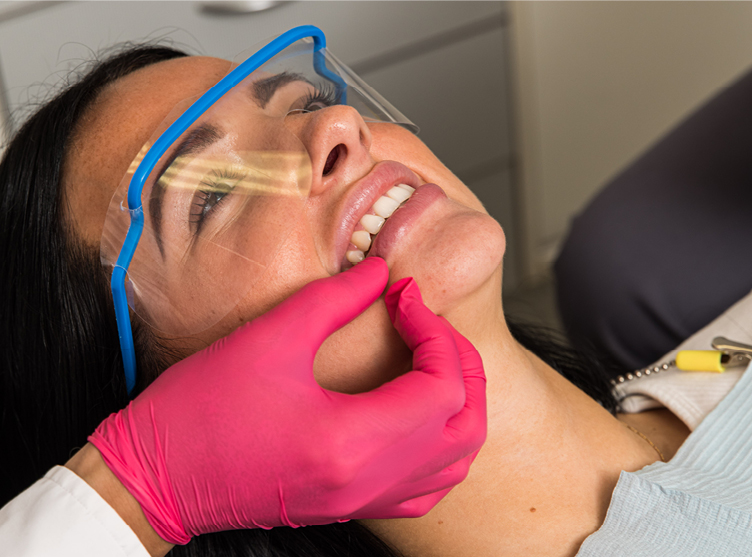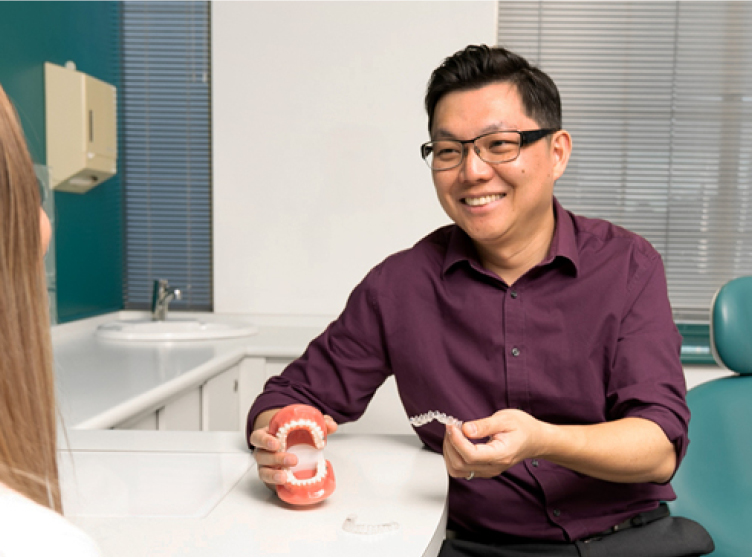
Tooth reshaping or tooth contouring is a cosmetic dentistry technique that helps improve the appearance of your teeth. It’s a corrective strategy and is not for everybody. If you plan to have tooth reshaping done after braces or to fix noticeably uneven teeth, there are things you need to know. How is tooth reshaping done, what it entails, its benefits and disadvantages, post-care and maintenance requirements, and cost will give you an idea of whether this solution is for you.
What is Teeth Reshaping?

Tooth reshaping, also known as odontoplasty in cosmetic dentistry, removes and contours the tooth enamel for a better appearance. It involves using precision instruments such as a drill or laser to shave away or add material. This cosmetic dental contouring procedure can address aesthetic flaws such as cracked or chipped teeth and minor misalignment issues. Tooth reshaping is unsuitable for major cosmetic dental issues, such as gaps between teeth or a severely misaligned tooth.
Benefits of Reshaping Teeth
Teeth contouring can have several advantages, including:
– Enhancing the overall aesthetics of your smile
– Improving confidence and self-esteem
– Shortening excessively long teeth
– Correcting minor cosmetic issues of the tooth’s surface, such as chips, cracks, and misshapen teeth
– Being a less invasive solution than veneers or crowns
– Requiring little or no anaesthesia
– Short time completion
– Results that last for years
– Being a cost-effective alternative to other cosmetic dentistry treatments
How does Teeth Reshaping work?

Tooth reshaping involves an initial consultation to determine the best course of action. Dentists then take dental X-rays and measure the thickness and shape of each tooth. The dentist uses this information to plan out exactly how much material they’ll need to remove or add from the tooth’s enamel during the dental contouring procedure.
Once everything is ready, they start reshaping your teeth. They use a drill, laser, or other precision instruments to alter the shape and size of your teeth. After reshaping, the dentist will make any necessary adjustments to ensure your bite is comfortable and balanced.
Who are good candidates for Reshaping Teeth?
Good candidates for teeth reshaping are individuals with chipped teeth, mild bite issues, sharp tooth edges, longer teeth, or minor misalignments. People who avoid the invasive process of veneers or crowns are fitted for dental contouring.
Teeth reshaping is a great option for those who want to enhance their smile but don’t have any major dental problems. It’s also an affordable solution that only requires a little maintenance.
Disadvantages of Tooth Reshaping
Although teeth reshaping can be a great way to enhance your smile, there are drawbacks.
- Irreversibility: The tooth enamel you remove from your teeth is permanent and cannot be returned.
- Sensitivity: After the procedure, your teeth may become more sensitive.
- Limited scope: Teeth reshaping can improve minor imperfections but cannot address major dental issues like tooth gaps or severe misalignment.
- Cost: Although it is a less expensive solution than veneers and crowns, teeth reshaping may still come with some cost depending on the complexity of the procedure.
- Maintenance: To ensure that your reshaped teeth are well cared for, you may need additional maintenance, such as using special toothpaste and mouthwash.
- Wear: Over time, the reshaped teeth may become more prone to wear due to abrasion from foods and drinks.
Alternatives to Teeth Reshaping
If you’re not an ideal candidate for tooth reshaping, there are other cosmetic dentistry procedures you can explore.
Dental bonding
A procedure that involves applying a tooth-coloured composite resin material to the surface of your tooth, often used to repair chips and cracks or close teeth gaps.
Braces
An orthodontic treatment that uses metal or ceramic brackets and wires to move uneven teeth into the correct position.
Veneers
Custom-made thin shells that fit over the teeth’s front surface to address discolouration, chips, cracks, misalignment, and gaps.
Teeth whitening
A process used to lighten discoloured teeth with the help of bleaching agents.
Post-Treatment Care and Maintenance

Proper oral hygiene is essential to ensure the results of your teeth reshaping last. Here is some tooth-reshaping dental care:
Brush and floss regularly: Use a soft-bristled toothbrush and fluoride toothpaste twice daily.
Cleaning: Use mouthwash to reduce bacteria in the mouth that can lead to cavities and unhealthy gums.
Avoid smoking: Smoking can cause discolouration of the teeth, staining, and bad breath.
Eat a balanced diet: Healthy diet promotes oral health and prevents tooth decay.
Visit your dentist regularly for checkups: Regular checkups with your dentist ensure healthy teeth.
Finding a Dental Professional
Finding a qualified and experienced dental professional is important if you’re considering reshaping your teeth. At Smile Team, specialist orthodontists have at least eight years of formal university training, ensuring practices have the highest qualification.
Tooth Reshaping Cost
The cost of having your teeth reshaped will depend on the complexity of the procedure. Generally, tooth reshaping is less expensive than veneers or crowns and can range from $50 to $300.
In Australia, most private health funds offer some level of benefits. Check with your health provider to see what your policy covers. You can also use a payment plan option to make the treatment cost manageable.
In Summary
Teeth reshaping is an effective and cost-efficient way to improve the appearance of your smile. It can help you address minor imperfections such as chips, slight misalignments, or overly sharp edges. This cosmetic procedure is relatively quick and painless and requires little maintenance afterwards.
However, it’s important to consider any potential drawbacks of the procedure and consult a trusted dental professional if this option suits you.
